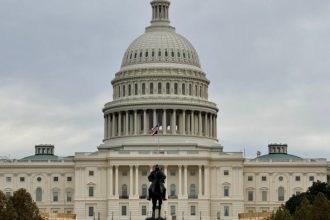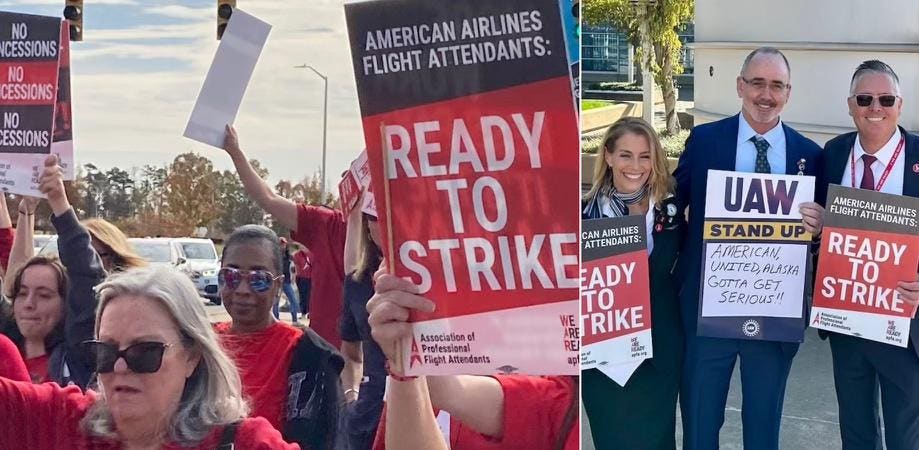As American Airlines flight attendants prepare to ask the National Mediation Board for a release from mediation, after working four years under an old contract, the country’s flight attendants may be in a stronger bargaining position than they have ever been.
Contracts are open at nearly every major airline, including Alaska, American, Southwest and United. Three different unions represent flight attendants at the carriers, but the unions are closely aligned.
“I can’t think of another time in history when we’ve been able to take on the entire industry and dramatically raise working conditions and wages for flight attendants,” Sara Nelson, president of the Association of Flight Attendants, said Friday in an interview. AFA is the largest flight attendant union with about 50,000 members.
“We are going to make historic gains,” Nelson said. “It will take more strike votes and more actions, but we’re all fighting for the same issues – control of our time at work, higher wages and better retirement. The wage demands are very similar.”
It is easy to see similarities with the tactics of the United Auto Workers, who in September staged simultaneous strikes at the big three automakers for the first time in history. The tactic resulted in 25% wage increases and other gains, not directly applicable to the airline industry, that included the end of a two-tier wage system and the reopening of a Stellantis plant that had closed.
On Thursday, the Association of Professional Flight Attendants, which represents 26,000 American flight attendants, staged demonstrations in 13 cities. At Washington National Airport, Nelson and UAW President Shawn Fain joined the APFA flight attendants. “Like Shawn Fain says, we will make them adhere to the highest standards, not the lowest standards,” Nelson said.
In Charlotte, American’s second largest hub, about 150 flight attendants demonstrated near the airport terminal, marking the largest turnout in a year when the group has staged several similar events. Charlotte base president Scott Hazlewood said the APFA 15-member board of directors will likely vote unanimously on Friday to request a release from mediation. If the National Mediation Board were to approve, that would enable a 30-day cooling off period, after which the union would be free to strike. American is expected to comment later today.
The dynamic of the current round of flight attendant negotiations is that Delta, where flight attendants are not represented by a union, has a set of pay rates and scheduling metrics, and the other carriers say they will match Delta. “That doesn’t make sense,” Hazlewood said. “It should be, ‘Here’s the standard we want.’ Of course we’re trying to bring up the whole industry.”
Also at the Charlotte demonstration, Nancy Pollak, a 48-year flight attendant who started at Piedmont Airlines, noted that a strike authorization vote in August had 99% support. “We’ve been beat up,” she said. Pollak agreed to take time off during the pandemic “so that the young whippersnappers could work and get a paycheck,” but said “It was a rough two years, being off.”
In April 2020, during the early days of the pandemic, the three women who lead the three largest U.S. flight attendant union groups jointly urged the Trump administration not to seek ownership stakes in airlines in return for grants, approved by Congress, that would pay airline employee wages through Sept. 30. It was the first day on the job as APFA president for Julie Hedrick, who signed the letter along with Nelson and Lynn Montgomery, president of Transport Workers Union Local 556, which represents Southwest flight attendants.
The three remain “closely aligned,” Nelson said. “We’ve all been on each other’s picket lines. We’re taking on the industry together. “
United flight attendants are negotiating their contract, while Southwest flight attendants are voting on a tentative contract agreement.
Nelson also questioned why Delta should set industry standards for flight attendants. In June 2022, Delta began to pay its flight attendants during boarding, a first in the industry: the policy set a bar that is expected to be matched in the other airlines’ new contracts. Still, Nelson said, “Delta is non-union, which undercuts the whole industry,” she said. “Delta follows us: we don’t follow them.”
Read the full article here





